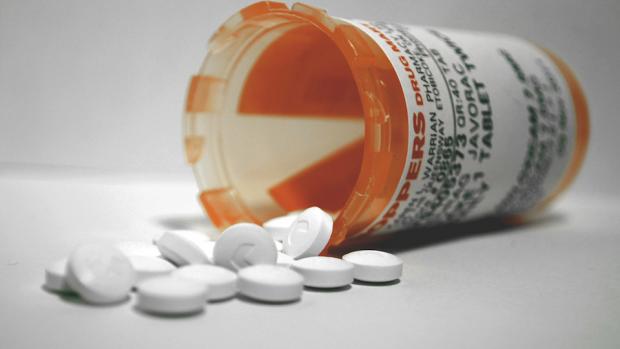Re-envisioning the pill bottle: Tandon Students Tackle the Prescription Opioid Epidemic

The statistics are chilling. According to a recent study by the American Society of Addiction Medicine, some two million Americans have a substance-use disorder involving prescription pain relievers. Drug overdose is now one of the leading causes of accidental death in the U.S., with 55,403 lethal overdoses in 2015 alone – almost half of those related to prescription pain relievers. Medical experts have traced a clear connection between the abuse of prescription opioids and heroin, with four out of five new heroin users admitting that they started out by misusing legally prescribed drugs.
An aspiring engineer from NYU Tandon, Artin Perse, is seeking a solution to what is now widely being characterized as an epidemic. His creation: a locking, tamper-resistant pill bottle equipped with a timing mechanism, which can be set to dispense only the dosage determined by the prescribing physician.
This innovative bottle was chosen from a crowded field last year to receive an NYU Prototyping Fund award. Perse went on to reach the finals in the NYU Reynolds Changemaker Challenge — an undergraduate competition for those with ideas for making measurable, positive, social impact. He is also currently a finalist in the United Nations Youth Assembly Social Venture Challenge and a semi-finalist in the NYU Stern $300K Entrepreneurs Challenge.
The final pitch for the Stern competition is slated to take place in May, and Perse will spend the intervening time leading his team (Anderson Cone and Camil Belmaachi from Tandon and Han Deng from NYU CAS) towards more intensive product development, while taking advantage of the many boot camps and workshops offered by Stern’s W. R. Berkley Innovation Lab to participants in the hotly contested challenge.
For executing the initial engineering strategy, Perse and his teammates have been taking advantage of the 3D printers and various other resources available at the new MakerSpace. “Over the next few months, we’ll refine the prototype,” he says. “Right now we’re focused on a bottle with utility for those suffering from acute pain, which would require a dose to be dispensed every four to six hours. In the future, the product could be modified to address the needs of patients with chronic pain.”
Associate Professor of Management Anne-Laure Fayard, who is involved in the Prototyping Fund, recognizes the societal benefits to Perse’s idea. “With prescription-drug addiction taking an enormous toll on our economy, public health, and social fabric, this innovation could change the way millions of people take their medications and change their lives for the better,” she says. "This is a wonderful example of the power of human-centered design in coming up with creative, practical, and scalable solutions for our most pressing problems.”
The team is grateful for Fayard’s encouragement and focus on design thinking. “We greatly value user-centered design,” Perse says. “That’s why, to date, we have conducted more than 500 interviews, cold emails, and calls with all the stakeholders involved in our project. This extensive customer development initiative has helped us to develop a product that users would love and appreciate — one that seamlessly integrates its way into the life of the patient with little to no impediment.”





